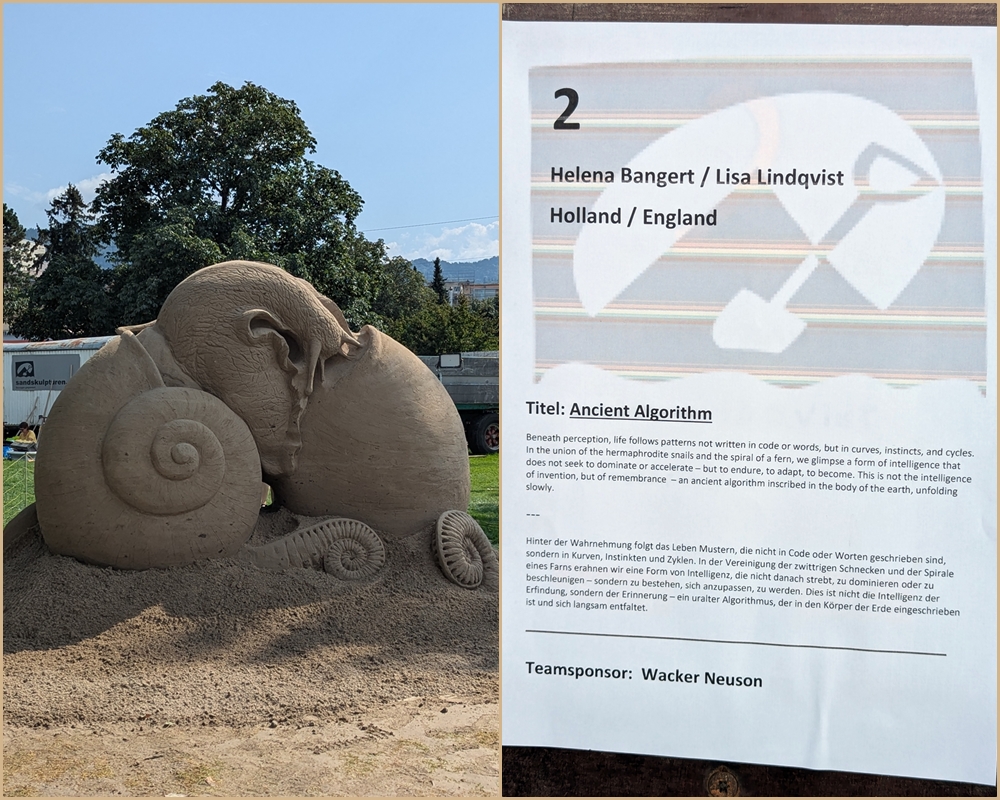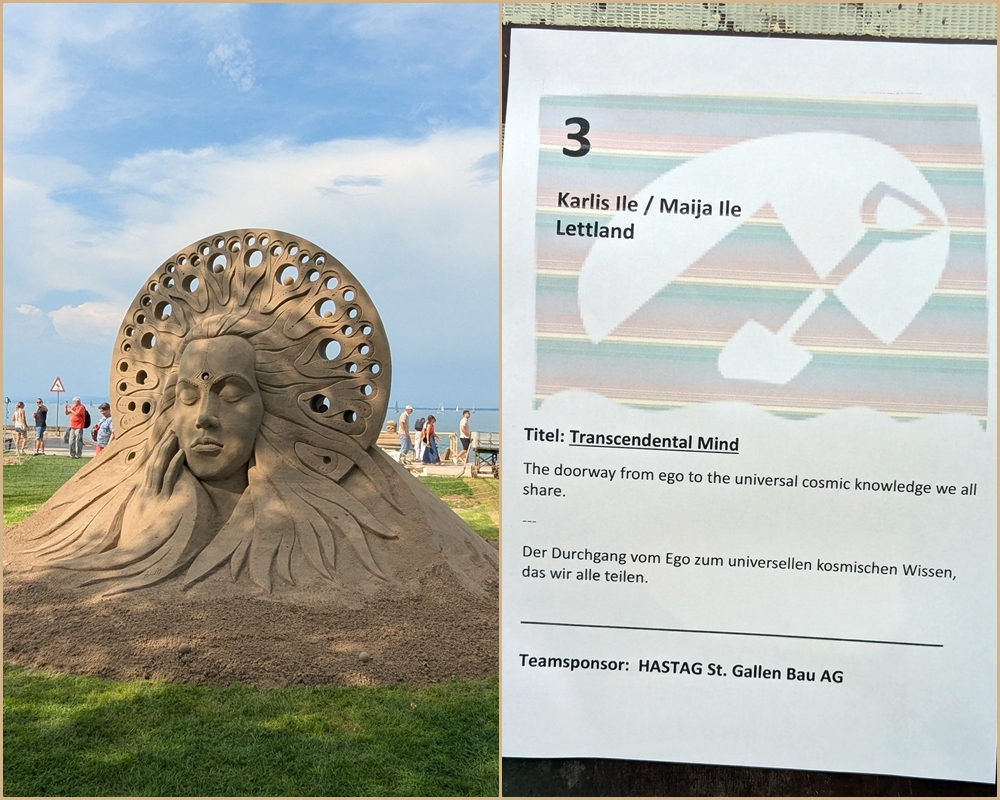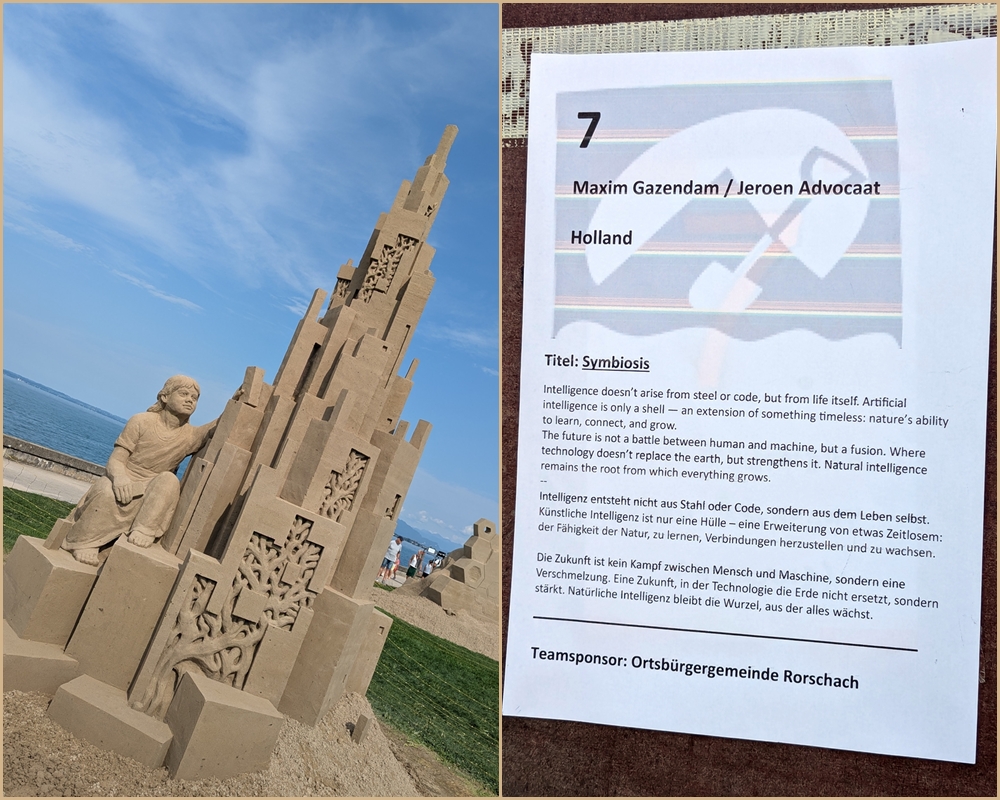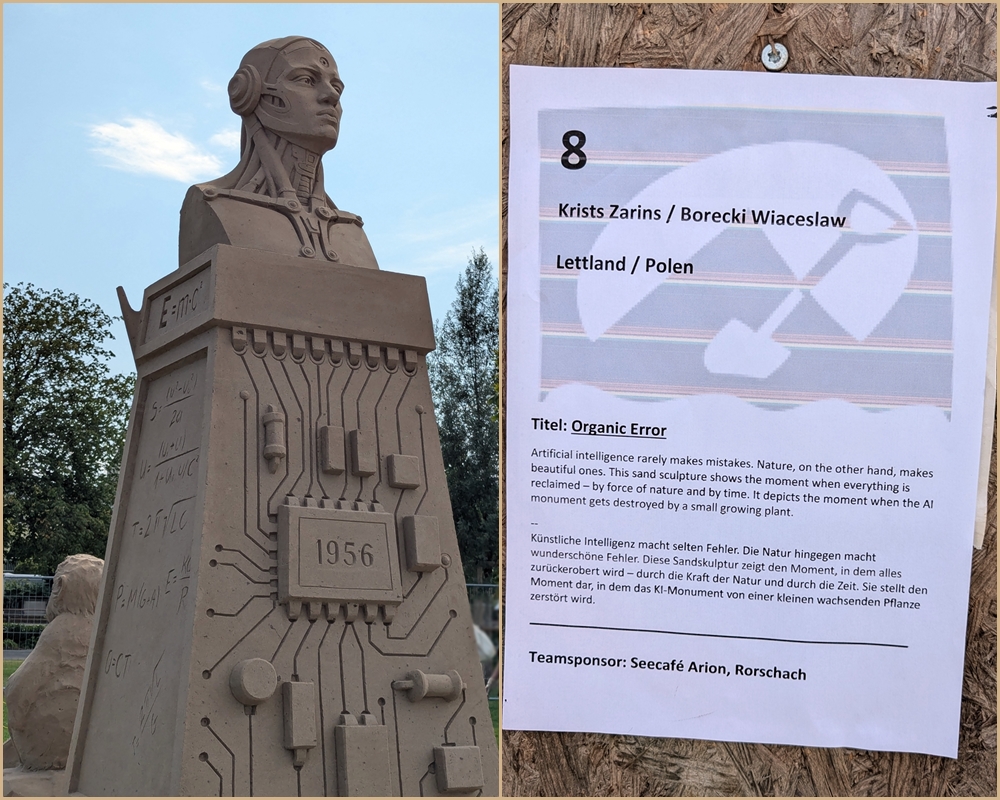Discover how Rorschach 2025 celebrates “Natural Intelligence”—human craft, living systems, and nature’s wisdom—far from the hype around AI.
Festival: 9. August – 16. August 2025, Switzerland, on the south side of Lake Constance (Bodensee). Exhibition: 17. August – 7. September 2025
While the world chases algorithms, Rorschach turns to the shore. Here, on the lake’s edge, artists trade prompts for palms, code for craft, and let living systems—and the human hand—take the lead.
Theme: “Natural Intelligence”
“Natural Intelligence” is intelligence as expressed by humans and living systems—creative, adaptive, embodied—beyond machines. It’s the precise problem-solving of a sculptor reading the weather, the pattern-making of roots and rivers, the intuition of a team that knows when to add water and when to wait. The festival chose this theme as a clear, gentle rebellion against the reflex to “think everything with AI,” inviting visitors to consider the kinds of knowing that doesn’t live on a server: touch, attention, empathy, cooperation, time.

Why sand? Because sand refuses to be faked. It settles, slumps, drinks up water, and tells the truth about the hand that moves it. With only simple tools—shovels, brushes, spatulas, buckets—artists make thousands of micro-decisions you can literally see in the grain: the compression that holds a cantilever, the carve that catches light, the texture that turns chaos into pattern. Teamwork isn’t optional; it’s the engine. And because the sculptures are ephemeral—built in August and displayed into September—the message lands twice: intelligence is not just what you build, it’s how you respond, moment by moment, to gravity, moisture, sun, and time.
Why Now?

AI is everywhere—buzzword, battleground, business plan. Our feeds hum with machine-made everything, and “intelligence” risks shrinking to whatever fits inside a model. Rorschach declines the shortcut. The festival chooses intuition over prompt engineering, ecology over efficiency, and craft over computation. It reminds us that thinking isn’t only linear or digital; it’s sweaty, sandy, social.
The emotional case is simple and stubborn: wonder, touch, and improvisation are strengths you can’t outsource. A fingertip smoothing an edge. A glance that says “wait, not yet.” A team switching tactics when the sun dries a façade faster than expected. These are micro-acts of judgment that feel human because they are—responsive, relational, alive. In a year obsessed with artificial “smarts,” Rorschach spotlights the kind we’re in danger of forgetting.
How did the artists translate the theme?
Nature’s Algorithms
To sculpt “Natural Intelligence,” many artists look into the nature’s toolkit: spirals, branching, dunes, waves. Their pieces read like field notes from evolution itself. These aren’t decorative flourishes; they’re problem-solving patterns rendered in sand—forms that optimise strength, distribute stress, and move resources with minimal waste. By carving these logics at monumental scale, the artists argue that nature is not merely scenic—it’s computational, a library of solutions etched by time.
Allegory & Story

Others artists come at the theme through narrative. Faces emerge from rootwork. Hands cradle leaves. Symbols of learning—books, eyes, paths—tangle with vines.
Allegory lets human perception steer: wisdom as a canopy, memory as rings, resilience as a knot that won’t slip. The stories are simple on purpose, the better to hold big ideas: that thinking can be tender; that knowledge is carried in bodies; that intelligence is felt before it’s measured.
Winner: Organic Error

In Organic Error, Krists Zarins (Latvia) and Wiaceslaw Borecki (Poland) stage a showdown between perfect code and imperfect life. The concept flips the script on “mistakes”: where machines aim to eliminate error, nature turns it into evolution—weathering, mutation, reclamation. The piece isn’t anti-tech; it’s pro-resilience. Natural Intelligence wins not by brute force but by persistence and adaptation, the slow arithmetic of growth and time.
Culture Shapes the Vision
Rorschach’s sand festival is a map of worldviews. You can read it in the gestures, motifs, and metaphors that artists bring from home.
- Eastern Europe: folklore and land-rooted wisdom—guardians, forest spirits, mythic animals.
- Asia: harmony and cycles—void and mass, curve and counter-curve; gateways and seasonal rings.
- Western Europe: allegory meets science—figures learning from ecosystems, often humbled by them.
The sculptures don’t just illustrate “Natural Intelligence” – they debate it.

Rorschach’s answer to the AI decade isn’t a lecture—it’s a shoreline full of proofs. You watch ideas take shape in sand, fail a little, adapt a lot, and stand long enough to move you.
That’s “Natural Intelligence”: judgment in the hand, memory in the muscle, patterns borrowed from roots and rivers, stories stitched to weather and time. It isn’t anti-technology; it’s pro-life—reminding us that the smartest systems are cooperative, resilient, and beautifully imperfect.
When the wind rounds an edge and the lake air dries a face, the sculptures change, and so do we. The pieces dissolve, but the lesson sticks: intelligence is not just what you know, it’s how you respond.

Leave a Reply